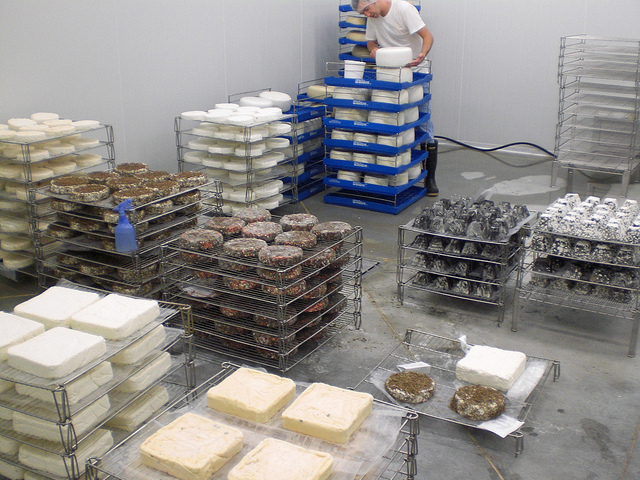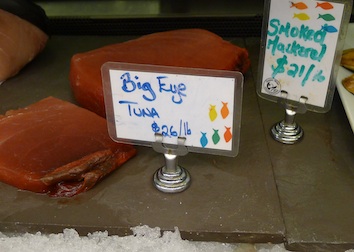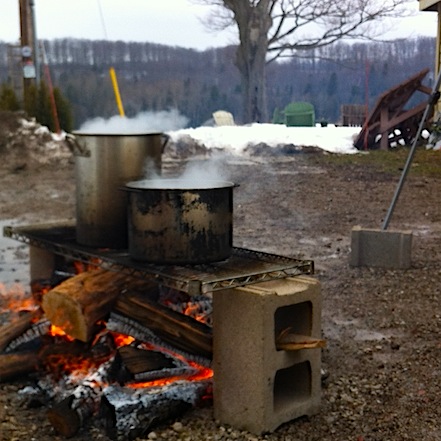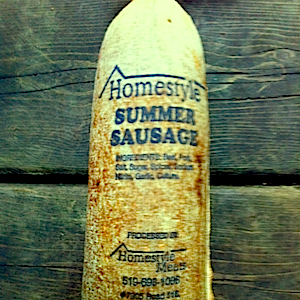by Charity Anais
It’s 11 AM and like an idiot I neglected to relate my previously warm excursions to the fact that I had donned long underwear, so now I am wandering the snow dusted streets of Frankfurt, Germany, chilled to the bone, through my oh so thin denim. Big mistake, huge.
Due to the fact that the majority of my culinary experience in Frankfurt was dependant upon the temperature shock I experienced I must preface this was a side note, my weather history, if you will. I grew up on California’s coast, amongst the most homogenous weather on the planet, my year abroad was spent on the equally temperate New Zealand West Coast, and my idea of cold is San Francisco in the Summer (though in my defense Mark Twain wasn’t exaggerating and I did stand in literally below freezing temperatures for over six hours to see my president get inaugurated, but that’s another story). Therefore, strikingly cold weather is perceived as just that: striking, even more so when encountered unexpectedly. Isn’t spring supposed to be the time of sun and flowers? Then why was there snow on the ground?
And since I am asking questions: Why was I wandering around Frankfurt’s Old Town, before any shops, or any warm location for that matter, was even close to opening? I was on the hunt for that oh so elusive and deliciously local apfelwein and grie soss. In English: apple wine and, I love this one, green sauce. So there I was wandering across a very exposed park, walking directly into the chilly wind, about to abandon my self-imposed adventure when three simple words beckoned: Jazz Café Bar.
Owned by the enigmatic, first name only, Darko, Jazz Café Bar is the epitome of cozy to a frosted and frozen traveler. It is so small that five round wooden tables cluster at one end of the bar, each dotted with a candle, and one that is lit nevertheless, something seldom seen before dinner. The walls and bar are adorned with jazz era photos and paraphernalia beckon you back to a simpler time while soft tunes of the same waft through the German chatter, not being able to understand the language just adds to the music.
Darko kindly plunked in front of me a glass of cold apfelwein, and an accompanying piping hot bowl of house made tomato soup, prepared fresh each morning and a tradition to the area. Unfortunately, no grie soss, though after my first glass of apfelwein and my first sip of soup all feelings of remorse over not finding the green sauce had wafted out the front door, along with the music. Not to worry, I didn’t forget about my quest, merely postponed it, and armed with direction from Darko I was soon to head back out into the cold and onto what Darko, and all those listening in, deemed the best grie soss in Germany. Like a good foodie I had done my research so the only question I had in my head was: do they include mayonnaise in their recipe?
There is, basically speaking, no set way to make grie soss. Each individual seems to have their own recipe, but, again basically speaking, there are set ingredients…sort of. Bunches of parsley, pimpernel, chives, watercress, chervil, garden sorrel and borage; all coarsely chopped, and served chilled with potatoes and either boiled beef or boiled eggs. Oh, and it may or may not be made with mayonnaise.
So after finishing my soup, which I overheard it declared as “Superb, superb” an accolade that needs no translation, I said my adieus and headed for the recommended restaurant; Achel, conveniently located just down the street
If you’ve ever heard of, or seen a picture of, or perhaps imagined a German beer garden then you will have an idea of what Achel looks like. Long wooden tables, grey and blue apfelwein jugs decorating the bar and walls, long wall mirror, and of course, an outdoor eating/drinking area: the garden. The weather was such that I refrained from pushing the experience to the extreme by enjoying the great outdoors and opted for the warmth of a hard wooden bench just inside of the entryway. An entryway that would shortly be pushed aside revealing Darko assuring himself that I made it safely and was happily enjoy my meal; which I did, and I was.
I ordered the two things I came to Sachsenhausen for. When the apfelwein came I was struck by how different it tasted from the one at Jazz Café Bar; stronger in apple flavor and alcohol. Then again, having tasted hundreds of Rieslings from hundreds of producers and no two are alike why would I assume the same of wine made of apples?
Then the grie soss appeared. Following my waiter’s recommendation I had ordered the boiled beef pairing, the apfelwein was also his idea. Classified as Germany’s lighter fare grie soss is delightfully light and this one, well, it had something up its sleeve. With each bite I felt I was getting closer and closer to the mystery ingredient. There was a crunch to it, and a touch of acid, and then I go it. Pickles!
After confirming the existence of pickles I innocently dropped the question: “Does your chef include mayonnaise in his recipe?”
“Absolutely not.”
Well there you have it. No mayo, a generous dose of pickles and pairing of apfelwein, though I found the pairing works best when consumed opposite of the traditional way. You know, bite of food, sip of wine. Not so here. Here it’s sip of apfelwein then bite of grie soss.
And though most guide books say that discerning palates drink apfelwein with a bit of sparkling water I never found a one who did or a bartender to recommend such. Frankfurt, and more specifically its old town of Sachsenhausen, takes its apfelwein seriously, so much so that one wouldn’t dream of serving it in anything by the most traditional of flagons. That is to say, the Schoppen, a smaller pint like glass, serrated so that in the past, when we ate sans silverware, it wouldn’t slip from a dinner greased hand.
Prost!
 Charity Anais is a sommelier and wine and travel writer. Though based in San Francisco she spends much of the year traveling to distant wine regions, or anywhere that has good food.
Charity Anais is a sommelier and wine and travel writer. Though based in San Francisco she spends much of the year traveling to distant wine regions, or anywhere that has good food.







